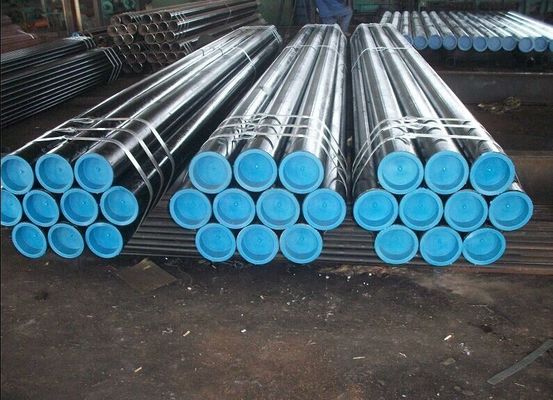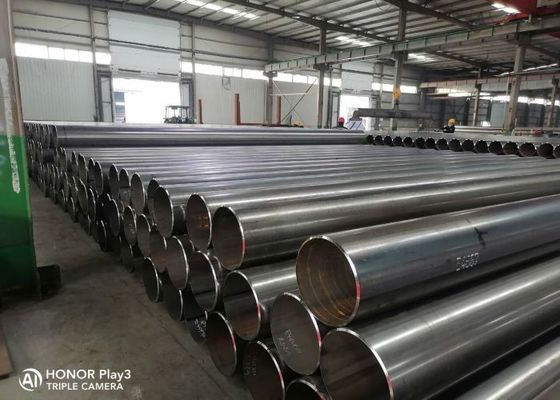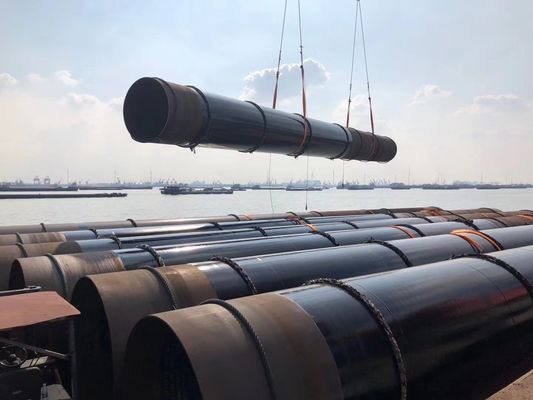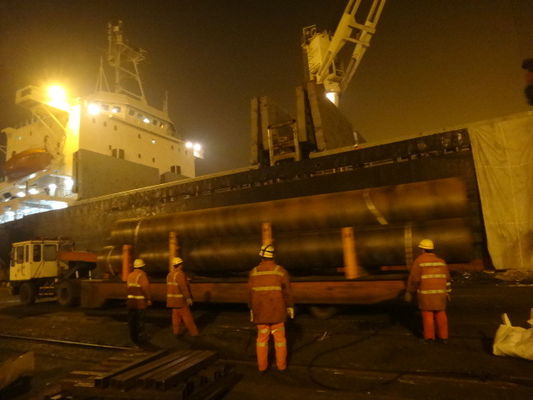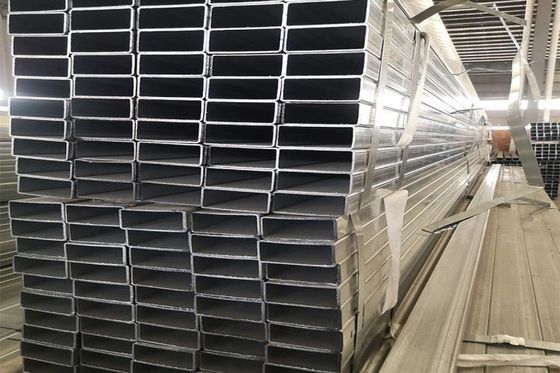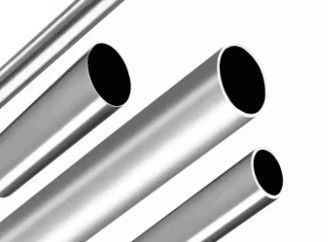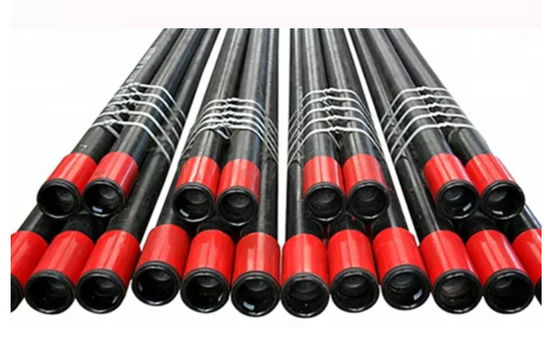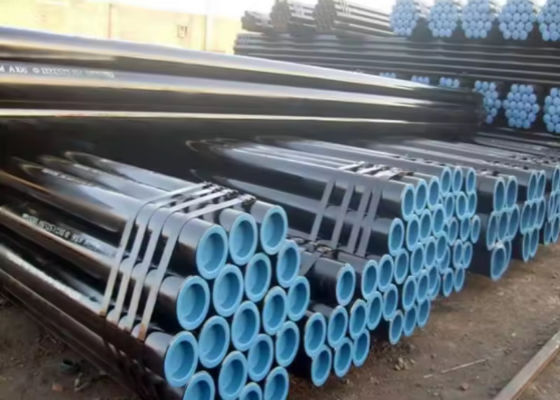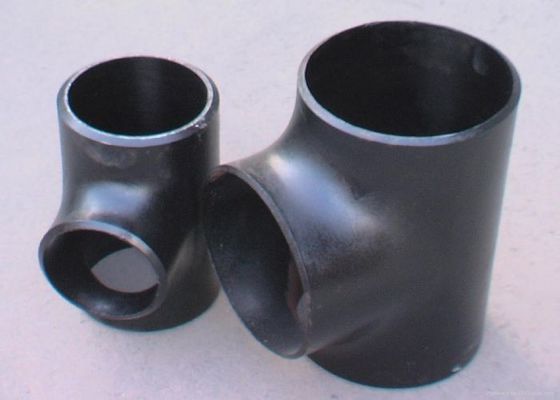Steel flanges can be classified into distinct types based on their connection methods, which determine how they are joined to pipes, valves, or equipment. This classification is critical as it directly influences sealing performance, structural integrity, and suitability for specific operating conditions (e.g., pressure, temperature, and medium). Below is a detailed English breakdown of flange types categorized by connection method:
1. Welding Neck Flange (WN)
Structural Characteristics:
A welding neck flange features a long, tapered neck that is integrally welded to the pipe. The neck thickness is designed to match or gradually transition to the flange ring thickness, minimizing stress concentration at the weld joint. The inner diameter of the flange typically aligns with the pipe’s inner diameter (ID) for smooth flow. No flange "lip" or raised edge is present (unlike other types).
Sealing Faces:
Common options include Raised Face (RF), Ring Joint (RTJ), and Flat Face (FF), depending on pressure and sealing requirements. RF is most standard for moderate to high pressures.
Applications:
Ideal for high-pressure (PN100–PN1600) and high-temperature (≥400°C) applications, such as oil refining, chemical processing, and nuclear power systems. Their rigid neck design resists deformation from pipe thermal expansion or mechanical stress, making them suitable for critical services with toxic, flammable, or high-purity fluids (e.g., hydrocarbon pipelines, steam lines).
Standards:
ASME B16.5 (ASME B16.47 for large diameters), EN 1092-1, GB/T 9113 (China).
2. Slip-On Flange (SO)
Structural Characteristics:
A slip-on flange is a simple, cost-effective design where the flange is "slipped" over the pipe end and welded (typically double-sided) to secure it. The flange’s bore is slightly larger than the pipe’s ID to allow easy installation. Unlike welding neck flanges, there is no tapered neck—instead, the flange is directly welded to the pipe’s outer surface.
Sealing Faces:
RF, FF, or Groove & Tongue (GT) are common, with RF being most prevalent for low-to-moderate pressures.
Applications:
Used in low-pressure (PN10–PN40) and ambient-to-moderate-temperature (≤300°C) systems, such as water supply, compressed air, and low-risk steam lines. They are unsuitable for high-vibration or large-temperature-fluctuation environments due to their rigid welding and thin flange structure (prone to fatigue).
Note: Double-sided welding ensures stronger joints than single-side welding, reducing the risk of leakage at the weld root.
Standards:
ASME B16.5, EN 1092-1, GB/T 9119 (China).
3. Loose Flange with Neck (LJ/SE)
Structural Characteristics:
A loose flange combines a weldable neck (to attach to the pipe) with a detachable flange ring (bolted to the neck). The neck is welded to the pipe, while the flange ring (which has bolt holes) is bolted to the neck, allowing it to "loosen" for maintenance or replacement without removing the pipe.
Sealing Faces:
RF, RTJ, or FF, depending on pressure requirements.
Applications:
Suitable for large-diameter pipes (DN ≥ 500mm) or systems requiring frequent disassembly (e.g., heat exchanger tube sheets, valve connections). They are also used when the pipe material (e.g., stainless steel) and flange material (e.g., carbon steel) differ, avoiding galvanic corrosion from direct welding.
Variants:
- Welding Neck Loose Flange (WNL): Neck welded to the pipe, flange ring bolted to the neck.
- Socket Weld Loose Flange (PJK): Neck inserted into the pipe and socket-welded.
Standards:
ASME B16.5 (for some variants), EN 1092-1, custom specifications for large diameters.
4. Socket Weld Flange (SW)
Structural Characteristics:
A socket weld flange has a recessed "socket" (inner bore) that matches the pipe’s outer diameter. The pipe is inserted into the socket, and a fillet weld is applied at the pipe-flange interface (typically on the outside of the socket). No external weld is visible, creating a smooth surface.
Sealing Faces:
Primarily RF, though FF is less common.
Applications:
Used for small-diameter pipes (DN ≤ 100mm) and medium pressures (PN10–PN40), such as hydraulic systems, instrument tubing, and small process lines. Their compact design resists vibration better than slip-on flanges but is prone to stress concentration at the weld root (avoided in high-cyclic-load systems).
Note: Requires precise pipe-to-flange alignment to ensure proper weld penetration.
Standards:
ASME B16.5 (for small sizes), EN 1092-1, GB/T 17185 (China).
5. Threaded Flange (Th)
Structural Characteristics:
A threaded flange has internal threads (e.g., NPT, G, or BSPP) machined into its bore, allowing it to be screwed onto a threaded pipe end without welding. The threads are typically tapered (e.g., NPT) to create a tight seal via thread deformation.
Sealing Faces:
RF or FF, with RF more common for higher pressures.
Applications:
Ideal for low-pressure (PN10–PN25), small-diameter (DN ≤ 100mm) systems in explosion-proof or non-weldable environments (e.g., oil storage tanks, chemical plants with flammable gases, or high-purity labs where welding is prohibited). They avoid heat distortion but require threaded pipe sections (prone to galling in corrosive media).
Note: Thread sealants (e.g., PTFE tape, pipe dope) are essential to prevent leakage.
Standards:
ASME B16.5 (for NPT threads), EN 1092-1 (for metric threads), GB/T 9114 (China).
6. Blind Flange (BL)
Structural Characteristics:
A blind flange is a solid flange with no central bore, used to seal the end of a pipe or equipment nozzle. It is bolted to a matching flange (e.g., welding neck or slip-on) to block flow. The blind flange’s thickness and bolt hole pattern match the connected flange to ensure proper sealing.
Sealing Faces:
Matches the connected flange (RF, FF, RTJ, etc.).
Applications:
Used for permanent or temporary pipeline blocking (e.g., during maintenance, testing, or as a system endpoint). They are critical in high-pressure systems where a solid seal is required (e.g., oil and gas pipelines, boiler outlets).
Variants:
- Spectacle Blind: A combination of a blind flange and a ring spacer, allowing quick flow diversion.
Standards:
ASME B16.5, EN 1092-1, GB/T 9113 (China).
Key Takeaways
Each connection method confers unique advantages:
- Welding Neck Flanges prioritize strength and seal integrity in high-pressure/high-temperature systems.
- Slip-On Flanges offer simplicity and cost-effectiveness for low-risk, low-pressure applications.
- Loose Flanges enable easy maintenance in large or corrosive systems.
- Socket Weld Flanges balance compactness and weld integrity for small pipes.
- Threaded Flanges eliminate welding in explosive or non-weldable environments.
- Blind Flanges provide reliable sealing for pipeline endpoints or maintenance.
Selection depends on pressure, temperature, medium properties, installation/maintenance needs, and industry standards (e.g., ASME, EN, GB).

 Your message must be between 20-3,000 characters!
Your message must be between 20-3,000 characters! Please check your E-mail!
Please check your E-mail!  Your message must be between 20-3,000 characters!
Your message must be between 20-3,000 characters! Please check your E-mail!
Please check your E-mail! 
